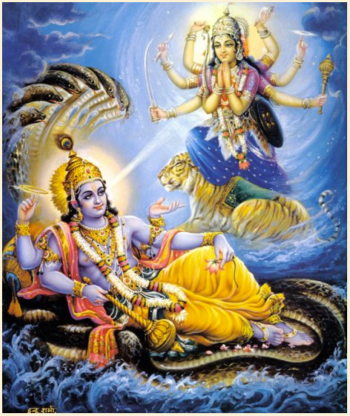New Year Resolution
Any more relevant?

Silly season
December known as ‘silly season’ aptly or not, is a month of merry-making with holidayers dotting different places around the globe. Children and equally elders too, joyfully look forward to the prospect of school-closing followed by festival-booms and the most eagerly expected New Year. They tire themselves out with routine partying extending to midnight on the 31st December. They are overwhelmed too receiving gifts galore.
And finally the New Year peeps in. At the stroke of midnight bells, unperceived by many in the din and bustle of all the hullabaloo and unmindful of the karmic effects that this same New Year is going to thrust upon. Year by year may pass; none can escape from the karma–phala – the fruits of action. So the old saying ‘as you sow, so you reap’ stares at the face as time rolls on. The moments of despair gnaw each one of us. Fortunate are those who are brought under the gracious umbrella of divine personalities. They are made to realise what is the ultimate purpose of life that meanders sans any meaning.
Saving Message
In Ramakrishna tradition, the beginning of the New Year brings in a new awareness of our goal. The moving incident that happened on the 1st of January in the life of Sri Ramakrishna is still a beacon light to all his followers over the globe. That day, every year is called Kalpataru Day. The message of Master on that day was “may you all be illumined”.
He was undergoing treatment for throat cancer. He came down the stairs on the 1st January, 1886 and started moving in the lawns. Many devotees had assembled there. They bowed down to Master.
To Girish, the Master said, “Girish, what have you seen that makes you glorify me publicly before one and all?” Girish at once fell at the Master’s feet and said with folded hands and choked voice, “What more can I say of Him, even a fraction of whose glory Vyasa and Valmiki miserably failed to express in their immortal epics and Puranas?”
Master heard these words of Girish, Seeing the divinely illumined face of the Master, Girish cried out joyously, “Glory unto Ramakrishna! Glory unto Ramakrishna!”. The Master looked at all present and said smilingly, “What more shall I say to you? May you all be spiritually awakened!”
Kalpataru Tree of Grace
How and when can this Kalpataru grace turn our own life towards progress in spiritual life? Undoubtedly, unconditional is the divine grace. Yet, in our heart of hearts, we do feel that without some sort of readiness to receive the grace, we make ourselves unfit for it. Why not we take a Resolution – a strong one at that – to attend satsang once in a week faithfully and uninterruptedly ? Let us begin with this one.
Kasipur event reminds us to go beyond the physical episode and makes us deeply think about its spiritual implication. If this was valid on that day, it is still valid today.
|| AUM Sri Ramakrishnaarpanamastu ||










